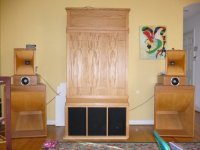This is very interesting. Let me ask you this: are you familiar with horn designs of Dr. Bruce Edgar?
I never heard his horn speakers. The horn profiles i have used in my system are LeCleac'h, which are held amongst the most " neutral " or " natural " sounding. I was believing that my horns had almost no coloration, until i compared.... that was the great AHA moment. I think anyone should make direct A - B comparisons . That is VERY revealing ...... and horns ARE directional. And that is disturbing , at least to me. The only range i would use horns is eventually supertweeters to brighten a little the treble. Nothing else.
Last edited:
Hi Angeloitacare,
I've read so many of your posts over the last few years and know about your strong explorations of horns including the old Western Electric formats (which I also have a soft spot for). In consideration of this, anything you report on the fidelity of horn systems I take very seriously. Thank you.
To be clear your anecdote about Bruce Edgar isn't accurate to what I have read. Bruce was actually demonstrating the tractrix profile as *not coloring* the human voice... As he wrote in one of his articles he would often do this to show how an exponential or other profile horn colored the sound while the tractrix sounded natural (by talking through each type of horn in turn). I've built a number of tractrix and in their bandwidth they are quite natural sounding (talking through them or playing music).
You used the Le'Cleach profile, which from all the public research appears to be "as good" as a tractrix expansion (although I've not seen any data suggesting which is more accurate/less colored). Maybe we shouldn't bother with discussing horn profiles because either of these two horns should be excellent sounding (although we still haven't addressed constant directivity profiles).
So, your arguments against mid-range horns I'm left with are compression drivers and unnatural directivity. Compression drivers have a sound, they must. There is a constriction the wavefront must travel through and that causes a speed/density shift in the signal/medium. How noticeable this distortion is might depend on the listener, how loud the system is played and variables like phase plug design and driver materials, but regardless it is a real circumstance of the design.
In regards to directivity, in most peoples cases removing the room from the equation improves the reproduction dramatically, however, if you are one of us who actually takes time to treat your room, then I can see how a horn might sound unnatural in a treated space. This is a concern I share as I work on the design of a horn system.
At risk of being a heretic; I'm one of those people who avoids compression drivers unless the design's SPL target requires one, although I have enjoyed mixing/mastering on co-axial systems using compression drivers at modest volumes (but I couldn't call those designs utmost fidelity, just hi-fi). (Urei studio monitors, classic Altecs, Tannoy's very highest of their hi-end).
In my experience so far I think pleated ribbons or AMT type drivers are better performing than compression drivers so I would also choose them, *however* I have not heard GOTO or TAD.
Is your room treated?
For now my bets are on constant directivity or near constant directivity designs since they produce a more even sound field that reduces the horns apparent lobing/FR variance which could be distracting in a treated space as it is soooo much more obvious. We'll see how everyone feels in 5 years , but for now precision and reducing room interplay are principle goals.
, but for now precision and reducing room interplay are principle goals.
FWIW our listening rooms were not there in the recording, so a perfect horn system (or any system for that matter) in a dead room (or in quiet free-field) should sound like the original space.
cheers,
A
I've read so many of your posts over the last few years and know about your strong explorations of horns including the old Western Electric formats (which I also have a soft spot for). In consideration of this, anything you report on the fidelity of horn systems I take very seriously. Thank you.
To be clear your anecdote about Bruce Edgar isn't accurate to what I have read. Bruce was actually demonstrating the tractrix profile as *not coloring* the human voice... As he wrote in one of his articles he would often do this to show how an exponential or other profile horn colored the sound while the tractrix sounded natural (by talking through each type of horn in turn). I've built a number of tractrix and in their bandwidth they are quite natural sounding (talking through them or playing music).
You used the Le'Cleach profile, which from all the public research appears to be "as good" as a tractrix expansion (although I've not seen any data suggesting which is more accurate/less colored). Maybe we shouldn't bother with discussing horn profiles because either of these two horns should be excellent sounding (although we still haven't addressed constant directivity profiles).
So, your arguments against mid-range horns I'm left with are compression drivers and unnatural directivity. Compression drivers have a sound, they must. There is a constriction the wavefront must travel through and that causes a speed/density shift in the signal/medium. How noticeable this distortion is might depend on the listener, how loud the system is played and variables like phase plug design and driver materials, but regardless it is a real circumstance of the design.
In regards to directivity, in most peoples cases removing the room from the equation improves the reproduction dramatically, however, if you are one of us who actually takes time to treat your room, then I can see how a horn might sound unnatural in a treated space. This is a concern I share as I work on the design of a horn system.
At risk of being a heretic; I'm one of those people who avoids compression drivers unless the design's SPL target requires one, although I have enjoyed mixing/mastering on co-axial systems using compression drivers at modest volumes (but I couldn't call those designs utmost fidelity, just hi-fi). (Urei studio monitors, classic Altecs, Tannoy's very highest of their hi-end).
In my experience so far I think pleated ribbons or AMT type drivers are better performing than compression drivers so I would also choose them, *however* I have not heard GOTO or TAD.
Is your room treated?
For now my bets are on constant directivity or near constant directivity designs since they produce a more even sound field that reduces the horns apparent lobing/FR variance which could be distracting in a treated space as it is soooo much more obvious. We'll see how everyone feels in 5 years
FWIW our listening rooms were not there in the recording, so a perfect horn system (or any system for that matter) in a dead room (or in quiet free-field) should sound like the original space.
cheers,
A
Last edited:
I never heard his horn speakers. The horn profiles i have used in my system are LeCleac'h, which are held amongst the most " neutral " or " natural " sounding. I was believing that my horns had almost no coloration, until i compared.... that was the great AHA moment. I think anyone should make direct A - B comparisons . That is VERY revealing ...... and horns ARE directional. And that is disturbing , at least to me. The only range i would use horns is eventually supertweeters to brighten a little the treble. Nothing else.
Angelo - I would agree with you here. I have found the straight Le Cleac'h not ideal or colourless in my system. There was an small but annoying harshness or colouration on vocals that would not go away after many experiments with crossovers and drivers. Eventually I did some careful listening to the drivers without the horn and realised the upper vocal range and treble was cleaner without the horn . Since then, I've built (one) Yuichi bi-radial horn of 415Hz cut-off ( a 0.7x -scaled A290S ) and this 'kills' the vocal edgyness. This horn does not quite have the fidelity, in the 4kHz+ range, of the straight horn, but when combined with a ribbon tweeter it sounds superb. I have just started cutting wood for a second Yuichi and hope to have this working in stereo in a couple of months.
Angelo - I would agree with you here. I have found the straight Le Cleac'h not ideal or colourless in my system. There was an small but annoying harshness or colouration on vocals that would not go away after many experiments with crossovers and drivers. Eventually I did some careful listening to the drivers without the horn and realised the upper vocal range and treble was cleaner without the horn . Since then, I've built (one) Yuichi bi-radial horn of 415Hz cut-off ( a 0.7x -scaled A290S ) and this 'kills' the vocal edgyness. This horn does not quite have the fidelity, in the 4kHz+ range, of the straight horn, but when combined with a ribbon tweeter it sounds superb. I have just started cutting wood for a second Yuichi and hope to have this working in stereo in a couple of months.
The last time, i heard radial horns, was in Hong Kong. It was a TAD speaker with two 15" 1601 woofers, and a TAD 4001 for mid-treble in a studio like listening room, with thick room treatening pannels.
It sounded just as expected. Hard and aggressive. A BIG no-no thank you. I do not want to be fatigued after 15 min listening session.
At the same trip, i went to a building, where only hi-fi is sold, near Kowloon. One store had the big Wilson Audios. Every time i listen to them, i just love them.....
I would easy xchange my Beyma's with Goto's though.... haha.
Thats probably anyones audio dream. Who knows one day......
Last edited:
Edgar tractrix horns sound great - sure ALL horns have non flat gain profiles which we call coloration. Use a driver with a rising response or some EQ and it's all good again.
I've been in this hobby for some 25 years. Most of this time (audio-wise) I spent rubbing elbows with Dr. Bruce Edgar. And after having listened to many different designs I can say that when it comes to acoustical music and vocals (the type of music I listen to the most) nothing surpasses Tractrix in terms of fidelity and the least amount of coloration. What I also discovered - after direct comparison - was that square horn (side ratio 1:1.5) sounded superior to round horn of the same flare rate and driven by the same type of compression driver. I discussed this discovery with Bruce and he gave me a good engineering explanation which, unfortunately, went right above my head.
I've been in this hobby for some 25 years. Most of this time (audio-wise) I spent rubbing elbows with Dr. Bruce Edgar. And after having listened to many different designs I can say that when it comes to acoustical music and vocals (the type of music I listen to the most) nothing surpasses Tractrix in terms of fidelity and the least amount of coloration. What I also discovered - after direct comparison - was that square horn (side ratio 1:1.5) sounded superior to round horn of the same flare rate and driven by the same type of compression driver. I discussed this discovery with Bruce and he gave me a good engineering explanation which, unfortunately, went right above my head.
I think my horns are 1.5 ratio flat wall too. Did not know it mattered but thanks for confirming its a great ratio. I use cone drivers in mine like Dr Edgar but take them up to 20k with no comp driver. More here
http://www.diyaudio.com/forums/full...ing-trynergy-full-range-tractrix-synergy.html
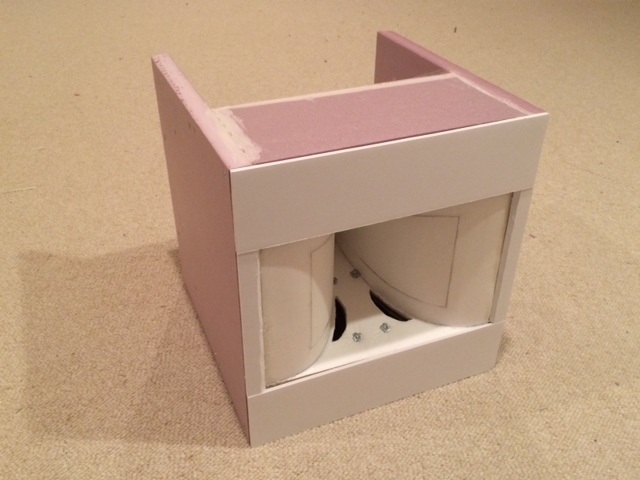
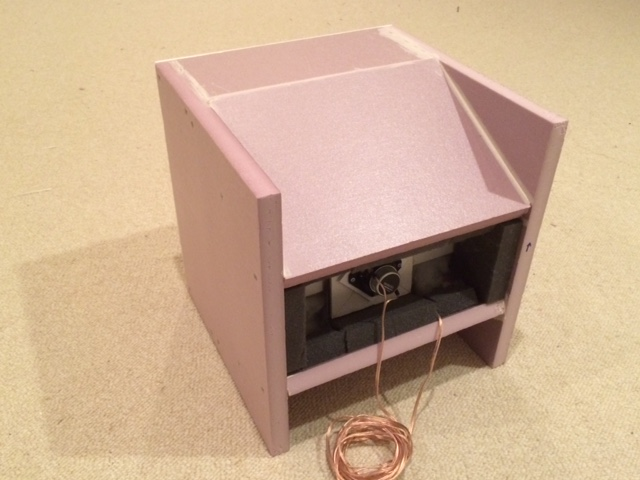
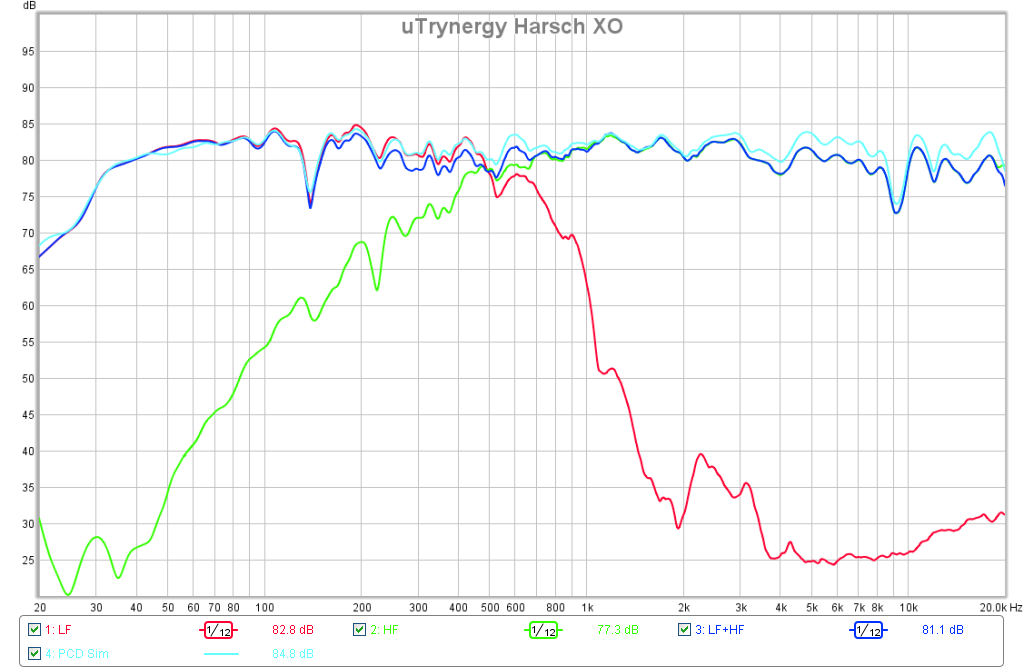
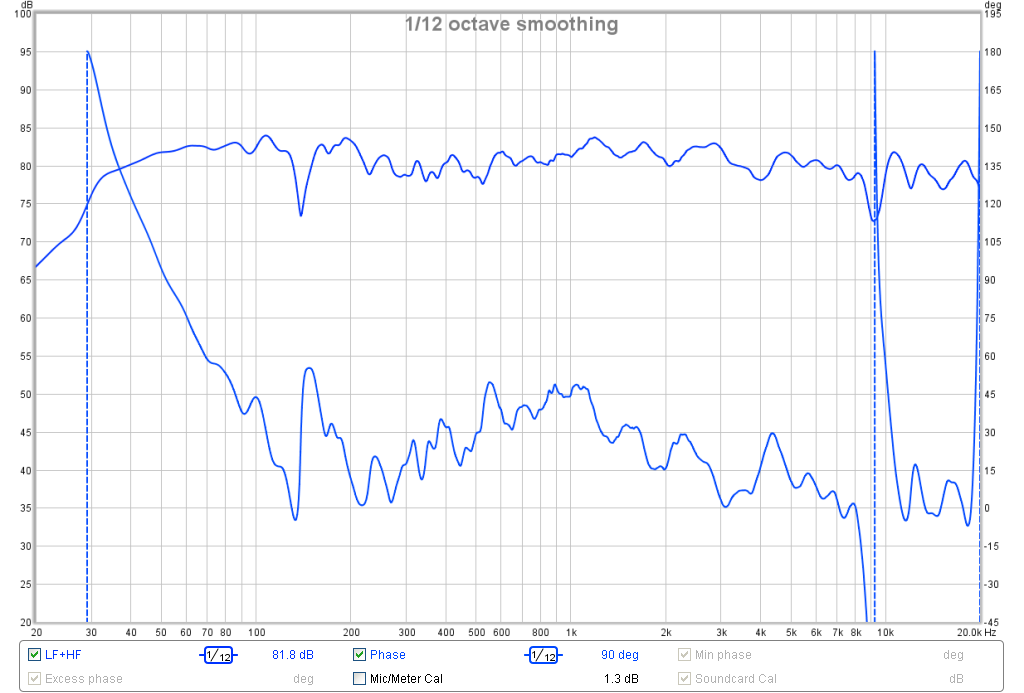
Last edited:
Edgar tractrix horns sound great - sure ALL horns have non flat gain profiles which we call coloration. Use a driver with a rising response or some EQ and it's all good again.
The best (most transparent/least coloration) horn system I have heard was full digital crossovers with Acourate and multi amped. I imagine most people don't have the space or want to deal with the complexity. Another thing that helped was not running the midrange horn from 600 hz all the way to the tweeter; instead having two horns horns covering that range, which I guess GOTO also advocates.
I don't want to go active. I believe that capacitor or resistor before amp is worse than after. Input signal level is more fragile than output, I would say.The TPL is weaker in the treble than a top horn tweeter. Less dynamic and less powerful. For top performance, a super tweeter seems to be indicated. But i dont miss it.
And quality of treble is very important for me. GOTO SG-16TT is really something! And together with RAAL is just perfect! Sound is full of Brilliance!
Even when highs are 10db higher level it doesn't create any discomfort, because they are pure and natural.
I agree. I'm not searching futher. I only want to try top GOTO with even lighter duraluminium diaphragms and even more powerfull magnets.But with the stuff you have, i would probably not search further. Goto is top notch.
Why are you not keeping the 146 in the lower midrange ?
I'm using 146 for 50-250hz range. But for 250-1000hz I found out that 505 is easier to integrate in this range. 146 is a beast
The last time, i heard radial horns, was in Hong Kong. It was a TAD speaker with two 15" 1601 woofers, and a TAD 4001 for mid-treble in a studio like listening room, with thick room treatening pannels.
It sounded just as expected. Hard and aggressive. A BIG no-no thank you. I do not want to be fatigued after 15 min listening session.
I haven't heard the TH4001 . I have heard the TAD 2001 on the TH2001 - this does not sound hard and aggressive. The Yuichi with GPA288H or Radian 745Neo-Be also does not sound hard and aggressive.
Hi Anthony!Hi SystemMurata
Nice project! I would love to come hear it sometime.
Does your tapped horn's group delay bother you? In that type of horn there is often a radical resonance which delays some fundamental BW so it comes late or rings out beyond its upper harmonics. The DTS-10 is absolutely insane in this regard, see the sealed vs tapped horn waterfall decay here:
Data-Bass
You'll notice the DTS-10 is ringing out over 300msec centered at 57Hz. The TH like the ones designed by Cowen & Volvotreter also have ringing but typically higher up in their bandwidth (since they're low corner is more towards 40hz not 15hz).
I like TH efficiency, but if you look at distortion (in band!) and group delay you'll notice it's coloring the signal. For TH played at home listening levels the distortion will be very very low but given your pursuit of near perfect reproduction I'd think you might be interested in a better solution? Also, as others have said here, step response / time alignment between the drivers is critical for realism in the sound stage.
How far back from the horns is your listening position?
Thank you and welcome to Moscow! I'll be happy to host you
I'm sitting at 4-5m from horns. Regarding TH, I understand group delay issue, but I also like sensitivity of TH and I don't need even second amp for them when I connect a pair per channel. I just don't see any alternative for them for 16-50Hz range. I have huge 21" ported sub from PHC and had JL Audio Phantom subs. They can't compete with TH in realism of lowest range reproduction. With other subs I hear bass separately from instruments...it is not group delay issue, but timber issue. I hear inertia of heavy driver's cone when it moves by santimeters! In TH this is not happening, so lowest range is also fast and pure like all other ranges.
Angelo, you are very much wrong regarding horns coloration and horn before mouth test (sorry to say thishi Anthony
i have only done direct comparisons between my large midrange horn channel, and the TPL. I don't know how the outcome would be between the TPL, and a smaller 1khz horn. My suspiction is that no matter what horn profile you try, it will ALWAYS color the sound. A simple test Bruce Edgar made some time ago is easy to repeat. If you put a horn before your mouth, the sound immediately changes. That is such a simple and obvious fact, i don't know why horn theorists do not simply acknoledge this, and rather try to make a round circle become square. Why not simply admit, that is a physical fact that cannot be overcome, and if you are not willing to miss the little dynamics more, you just accept the fact.... A no compromise speaker is not existant, so you chose between one compromise and another. The least compromise gives the best result. The TPL is the most non-fatiguing, natural , and timbre close to the original i have come across, and the measurements confirm the listening experience. It has lower distortion than any compression driver.
Horn is an acoustical amplifier which amplifies only selected range, which depends on horn's profile. So, when you put horn before your mouth you get equalized sound, so of course it sounds colored. So, yes, you can't get natural sound by using one horn. But with 6 you can
With each of horn you can amplify selected range and combine them to one linear frequency response. But from my experience, coloration comes because of reflection from the edge of horn. Same coloration you have from conventional speakers because of reflection from speaker surface. With LeCleach you can eliminate this. So, LeCleach horns are less colored than conventional speakers, I believe.
Another problem with long horns is that frequencies much higher than horn's profile fs are coming with huge coloration, so it is important to be sure that this sound will be attenuated enough.
So, horns are perfect when coocked right
From what I recall I don't think Angelo even used the correct JMLC flare but rather a hybrid of his own design...
That aside, the *elliptical* JMLC is truly something, first time I ever heard zero coloration from a horn... aspect ratio similar to 1.5 as it happens...
Murat - I'm very envious of the 146LD! You mentioned the stronger drivers, if you are interested, a friend of mine in the UK has an unused pair of SG-570-BL (Beryllium, not duralumin) which he may consider selling. If you are interested, PM me and I can put you in touch.
Having seen the measurements of the 505 and heard them briefly, I'd expect the 570BL to be much better, but I admit no direct experience of the latter.
That aside, the *elliptical* JMLC is truly something, first time I ever heard zero coloration from a horn... aspect ratio similar to 1.5 as it happens...
Murat - I'm very envious of the 146LD! You mentioned the stronger drivers, if you are interested, a friend of mine in the UK has an unused pair of SG-570-BL (Beryllium, not duralumin) which he may consider selling. If you are interested, PM me and I can put you in touch.
Having seen the measurements of the 505 and heard them briefly, I'd expect the 570BL to be much better, but I admit no direct experience of the latter.
Angelo - I would agree with you here. I have found the straight Le Cleac'h not ideal or colourless in my system. There was an small but annoying harshness or colouration on vocals that would not go away after many experiments with crossovers and drivers. Eventually I did some careful listening to the drivers without the horn and realised the upper vocal range and treble was cleaner without the horn . Since then, I've built (one) Yuichi bi-radial horn of 415Hz cut-off ( a 0.7x -scaled A290S ) and this 'kills' the vocal edgyness. This horn does not quite have the fidelity, in the 4kHz+ range, of the straight horn, but when combined with a ribbon tweeter it sounds superb. I have just started cutting wood for a second Yuichi and hope to have this working in stereo in a couple of months.
I had the same issue with GOTO 370 with their own 600Hz horn.
It has around 0.5" throat and quite long...may be 30sm.
I've removed throat adapter from driver and connected 1.5" throat 1000Hz LeCleach horn (3sm long) and harshness or coloration disappeared completely.
This is how GOTO looks without throat adapter:
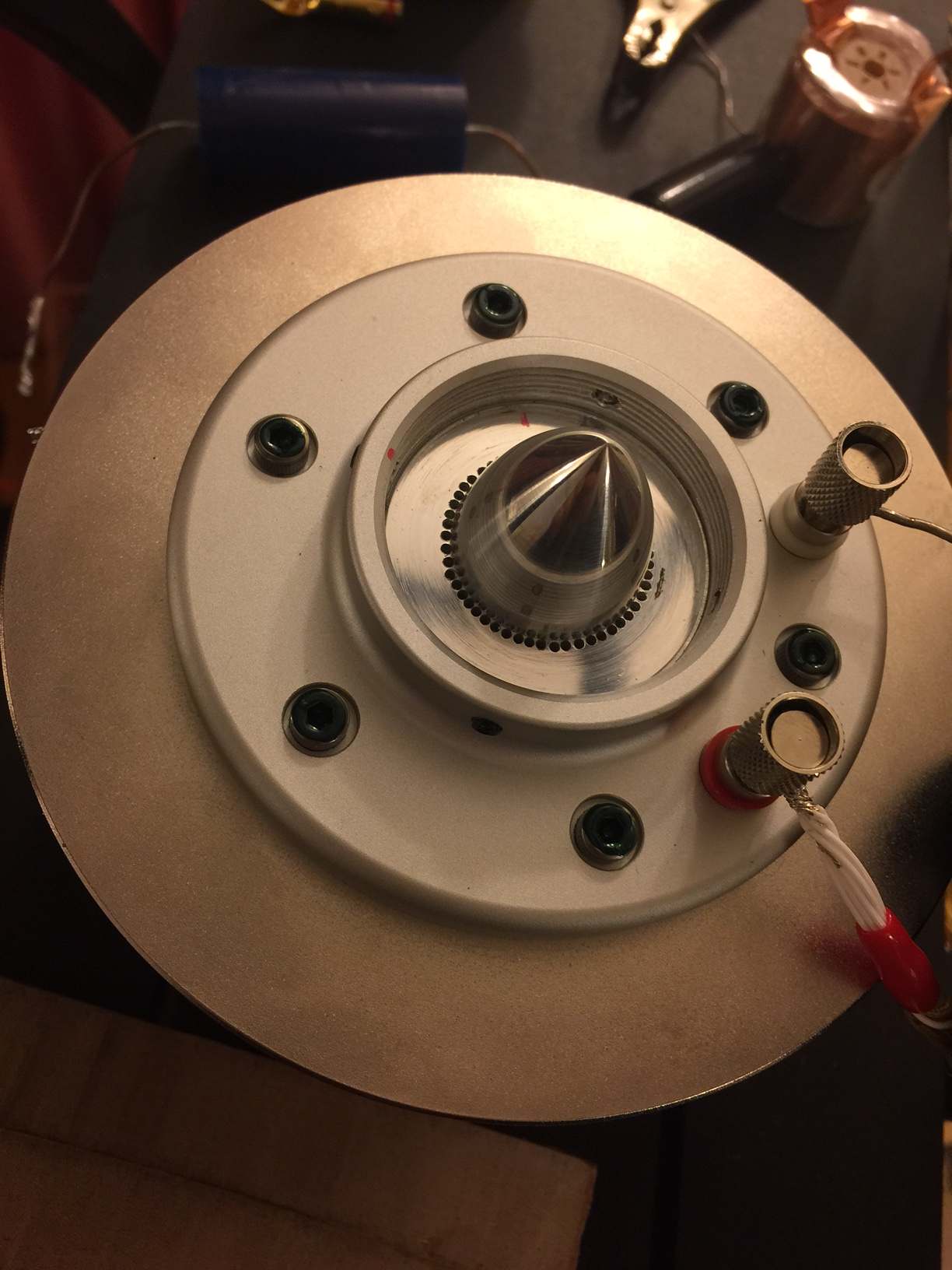
From what I recall I don't think Angelo even used the correct JMLC flare but rather a hybrid of his own design...
That aside, the *elliptical* JMLC is truly something, first time I ever heard zero coloration from a horn... aspect ratio similar to 1.5 as it happens...
Murat - I'm very envious of the 146LD! You mentioned the stronger drivers, if you are interested, a friend of mine in the UK has an unused pair of SG-570-BL (Beryllium, not duralumin) which he may consider selling. If you are interested, PM me and I can put you in touch.
Having seen the measurements of the 505 and heard them briefly, I'd expect the 570BL to be much better, but I admit no direct experience of the latter.
I'm definately interested in 570BL, so give my contacts to your friend. Thank you
The best (most transparent/least coloration) horn system I have heard was full digital crossovers with Acourate and multi amped. I imagine most people don't have the space or want to deal with the complexity. Another thing that helped was not running the midrange horn from 600 hz all the way to the tweeter; instead having two horns horns covering that range, which I guess GOTO also advocates.
I definately agree! In say 400Hz horn to support midrange driver from 600Hz, 5k+ range will sound like you put your driver inside the cask.
I use 47Hz horn for 146LD till 250Hz, then 270Hz horn for 505 till 1000hz, then 1000hz horn for 370 till 4-5khz and then tweeters. So, drivers are always loaded in expected frequency ranges and no "sound from cask" type coloration.
I agree digital is way to go. My system is miniDSP and class D amps. XO is Harsch quasi transient perfect. Electronics wise very compact and simple - and less expensive than passive XO's.
I'm not going digital. I even going to remove digital filter from my DAC. NOS multibit, I/V resistor, Step-Up transformer and tube pre-amp. No op-amps for sure and never any digital alchemy
I had all best DACs of high-end industry including latest designs, but end up with this solution as purest and most resolving!
Hi Anthony!
Thank you and welcome to Moscow! I'll be happy to host you
I'm sitting at 4-5m from horns. Regarding TH, I understand group delay issue, but I also like sensitivity of TH and I don't need even second amp for them when I connect a pair per channel. I just don't see any alternative for them for 16-50Hz range. I have huge 21" ported sub from PHC and had JL Audio Phantom subs. They can't compete with TH in realism of lowest range reproduction. With other subs I hear bass separately from instruments...it is not group delay issue, but timber issue. I hear inertia of heavy driver's cone when it moves by santimeters! In TH this is not happening, so lowest range is also fast and pure like all other ranges.
If you want the ultimate bass, there's no way around a horn sub. Alright, it won't give you 16Hz, but trust me, you won't need it. I think 35Hz is all you really need.
Attachments
Last edited:
- Home
- Loudspeakers
- Multi-Way
- GOTO 6-way TimeAligned Horn System
